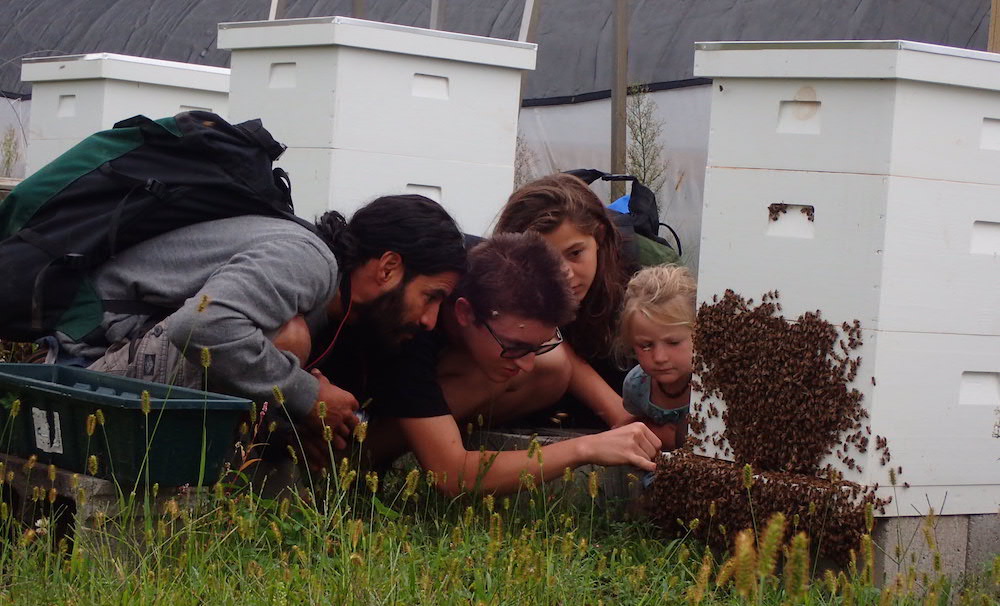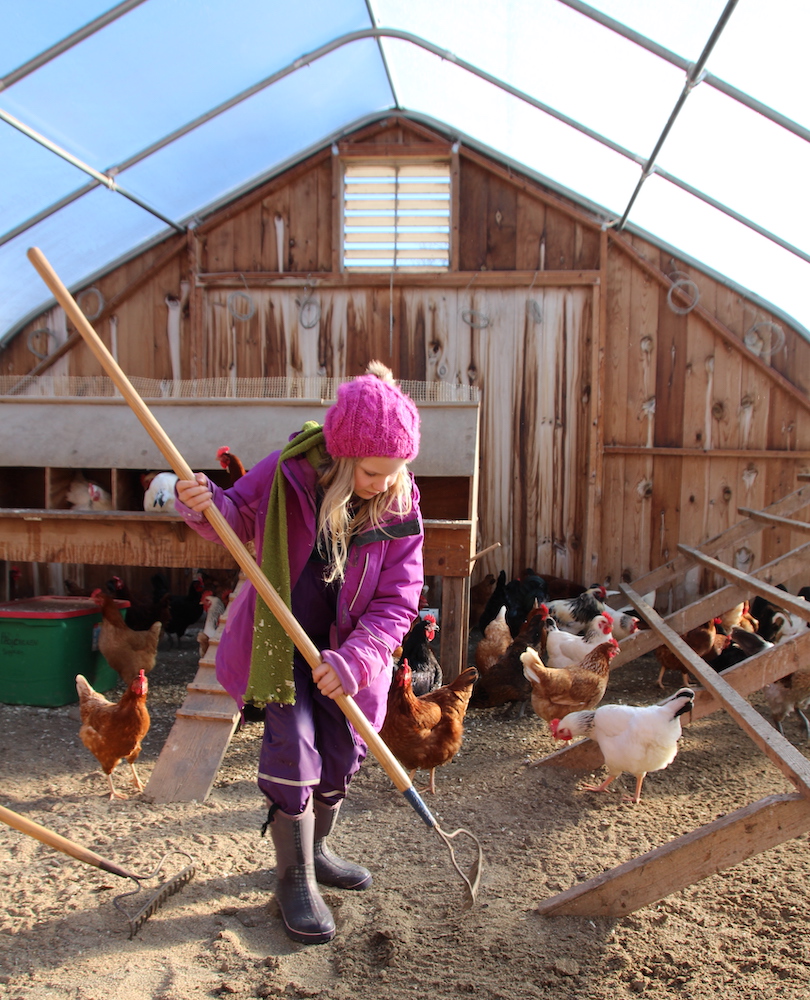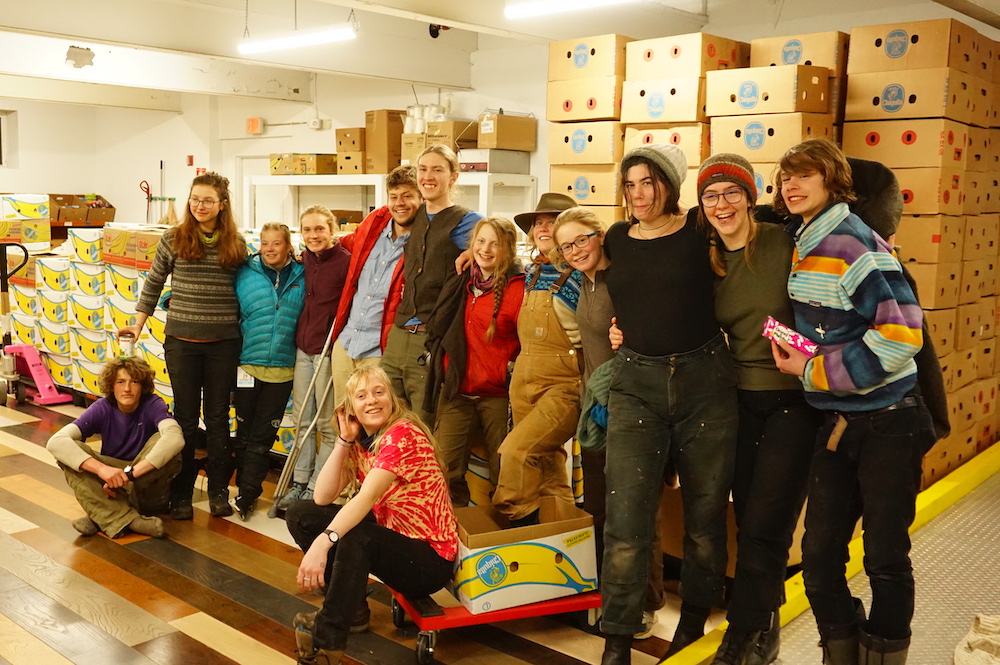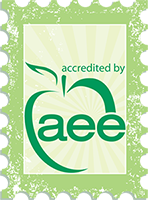By Monica Marshall
This past year Waldorf schools, like most other educational institutions, found creative solutions to keep their children and families as healthy as possible. It was heartening to see the many innovative ways schools met this challenge. As we slowly emerge from this unprecedented situation, it is worth reflecting on the normal structures that surround our schools. Most schools do a very good job of connecting students of one class to students in other classes, whether it’s for work projects around the campus or preparing for festivals. Each of those activities give the students opportunities to develop and strengthen a healthy social life, one of the cornerstones of Waldorf education. Schedules at our schools, however, are often so packed with classes, celebrations, and festivals that the children spend almost all their time on their own campuses, and that makes it difficult for our students to interact with the greater community. We have learned, through this pandemic, how interconnected we are as a society, how the actions of each of us have an impact on others. More than ever, it is crucial that Waldorf students become more visible in their communities.
Over the years I have engaged my five classes in a wide variety of service projects, to their delight and satisfaction. I have also seen colleagues engage their students in many creative service activities, but too often I have also seen classes miss this opportunity, their class teachers believing there was not enough time, or that students would miss too many specialty classes. Teachers were concerned that there was no way to transport their students to off-campus locations. Those are all reasonable concerns, but my own experience offers a way forward.

Checking on a bee hive
Specials teachers can be great supporters of service programs, both in embracing more flexible schedules and being able to transport and engage along with upper grade students in the larger community. For one of my eighth grades, the handwork and woodshop teachers suspended their usual classes for six weeks and made themselves available to help transport and work with students on a variety of projects for our town. It was very satisfying for the students and helpful for the town, and broadened the relationships the students had with their teachers, a win-win for young adolescents!In Waldorf education we create a curriculum in each grade that meets the developmental needs of the students, so service projects in first and second grade would look very different than those in the middle school. It would be wonderful for each school to develop a formal service program, just as we have world language or music programs, and teachers could be supported in developing projects that would be meaningful for their students.

Slicing carrots to be dehydrated
Over the years I have had a two-fold view of service when creating projects: I like the students to be connected to international initiatives, as well as helping locally. In the younger grades some projects with a local focus have included drawing seasonal pictures that we delivered to nursing homes where people might not be able to see the changing of the seasons on their own. We have done clean ups in the neighborhood and in local parks, and we’ve joined other classes to plant bulbs. Along with the rest of the school we have collected food for the local community food bank. Younger children have been delighted to collect small toiletries for families who need extra support, and they have especially liked collecting books and other gifts to send to others during the holiday season. More globally, all of my classes have collected money during the winter months, usually for Heifer International. (Monetary donations to Heifer are used to purchase farm animals, bees, and trees of all kinds to help needy families around the world live sustainably). In the younger grades I guided the students to choose which animals or trees to send based on the nature stories they heard that year. Older students had wonderful conversations about what gifts would best benefit the recipients. Important debates about environmental and social justice were regular components of these conversations.

Harvesting onions
Third and fourth grade students, experiencing the world anew through the lens of the nine year change, were enlivened by the confidence and satisfaction they experienced when they completed meaningful projects in their communities. My students in those grades loved helping on farms, and gleaning for the larger community was always rewarding for them, especially as most of them rarely experienced food insecurity. I encourage teachers to reach out to local farms, even if there is a farm located at the school, because those are important, and often very interesting, connections to make. One class crocheted granny squares which we then sewed into a blanket and donated to a local shelter, while another prepared backpacks for foster children. Whenever I presented a project to a class, I used language that best met the understanding of the group. The idea was to allow empathy to develop, not to cause the children to worry.

Stacking firewood into bins for use around campus
By fifth grade, students are generally feeling quite capable and like to tackle more physical projects. One of my groups decided to pick up litter on the main street of our town. I don’t think they realized how daunting a task that would be when they began, but they committed to a once-a-month clean up in the autumn and spring of fifth grade, and they were inspired to continue through sixth grade. It was always interesting to see the interactions they had with people on the street. Most people were very impressed with their effort and enthusiastically shared their appreciation. More than once cookies were delivered by business owners. I’ve had fifth-grade students visit assisted living homes, sharing songs, verses, and projects, again a win-win experience as the students receive appreciative feedback from the elders.As sixth graders prepare for the Medieval Festival, service is an important component as they begin to explore the qualities of chivalry. That exploration provides a meaningful background for the choices that will be made when choosing independent service projects and when choosing class projects. Each student in my sixth grades wrote me a letter describing their project; we had everything from working at a donkey rescue center to collecting food from neighbors for the local food bank to stacking wood for elderly neighbors. They were required to complete twelve hours of work before the festival, and we regularly had invigorating conversations as they checked in about their progress.

Raking the chicken coop
We also had projects we completed as a class, things like visiting a nursing home weekly and engaging with groups and with individual residents. This often became a multi-year relationship, and more than once students recognized the mental or physical deterioration of one or more of the residents. Classes regularly presented their independent science and geography projects at the nursing home, with the geography feasts becoming a much anticipated part of the presentations.Seventh and eighth graders are often engaged in fundraising for end-of-year field trips, but service work can still be an important part of that experience. Very thoughtful conversations occur about the uses of money at this age. Some students invariably question why they have to donate some of their hard-earned money to the school or other institutions, and the ensuing conversations offer an opportunity to develop more nuanced thinking about the movement of money in our society and our responsibility to other people in our community. I have never failed to be impressed with the caliber of these conversations, and often the students who raised the initial objections became the most generous when it came time to share our funds.

Chopping wood in the morning light
As much as possible I paired my upper classes with younger grade students on projects. Drawing pictures together, making crafts for others, and cooking together was very rewarding for both groups. One of the benefits of being part of an elementary school is being able to offer opportunities for the younger grades to be inspired by upper grade students, and allowing the middle schoolers to lead with their best qualities. Engaging in service projects together always provides many layers of benefits, for the children, for the school, for the parent body, and for the broader community.This article was originally published on October 4th, 2021 in Waldorf Today.
Monica Marshall has been involved in Waldorf education since 1979, most of that time as a class teacher. She recently retired from full-time teaching and has been enjoying engaging in Waldorf education in non-traditional settings. Monica has spent the pandemic teaching in the junior high program at Kroka Expeditions and mentoring teachers, in person and over Zoom. She would love to have conversations with schools or individual teachers about developing service programs. She may be contacted at mncmarshall@gmail.com.


